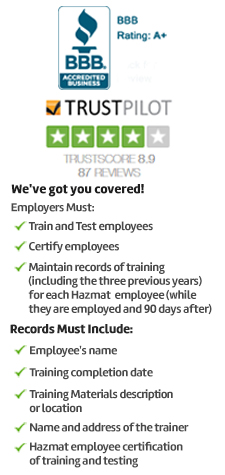
OSHA Construction Silica Safety Training

Exposure to Silica can be dangerous for workers in construction sites. These silica exposure can caused due to crushing of concrete, stone or rocks, breaking bricks, sawing, sand blasting, cutting and polishing stones etc. These activities release high amount of silica in the air which cause long term health hazard when inhaled by workers and others in the vicinity. The health risks can be reduced if they get proper training and follow risk control measures.
This online course trains participants to know the dangers of silica in construction sites, safe work practices to reduce silica exposure and regulations to be followed by workers and employers. Learners also get to know risk perceptions, health hazards, safe exposure level and how to mitigate react and procedures to follow when accidentally exposed to silica.
Governing regulations
The Occupational Safety and Health Administration (OSHA) formulated rules to be followed by construction industries against silica exposure beyond safety standard for workers concerned. These safety standards are referred as OSHA 29 CFR 1926.1153. Employers and workers in OSHA-approved state must check for compliance and follow the standard regulations to ensure overall safety for everyone from accidental silica exposure.
Course Overview
This online OSHA Construction Silica Safety Training Course provides learners with accredited training to safeguard themselves and workers from poisonous silica dust and provide safe work condition. Students also taught on various control measures to avoid illness due to contracting silica at construction sites and how to implement control measures which are often overlooked. Students are made to understand the dangers, type of risks, health hazards, safety standards and best work practices during the course of training to make them qualified safety officers who can manage risks caused due to silica at construction sites.
Who Must Take this Course?
Workers generally involved in construction activities are prone to silica exposure and need regular training and updates about the danger of inhaling silica particles. Apart from the normal workers, all supervisors, work site managers and engineers must take precautions to avoid inhaling silica particles. These people along with the employers need to be trained to have general awareness about silica exposure and its health impacts.
Course Format
This online Construction Silica Safety Training course contains quality content prepared by HSE experts, graphical and audio explanations, case studies and good number of practice questions for students to prepare well for the final exam.
All successful candidates will be provided with hard copy of completion certificate along with a printable wallet card.
Continuing education credits?
Each successful learner is eligible for 0.2 CEUs (or 2 CMEs) certification after the duration of the course.
Topics Covered
- Introduction to OSHA Construction Silica Safety Training
- History of Silica Regulatory Efforts in Construction
- Key Provisions of the OSHA Regulations
- More About the Permissible Exposure Limit
- Standards Currently in Place
- Injury Statistics
- Key Terms
- All About Crystalline Silica
- Quartz and Cristobalite
- How Are Workers Exposed to Silica?
- Is Silica a Hazard in My Workplace?
- Determining How Much Silica Is Present
- Selecting a Laboratory
- Implementing Controls
- Silica-related Diseases
- Stages of Silicosis
- Chronic Silicosis
- Accelerated Silicosis
- Acute Silicosis
- How Can You Determine If You Have Silicosis?
- Medical Examinations
- Controlling Silica Exposure in Construction
- Hierarchy of Controls
- What Can Workers Do to Limit Their Exposure?
- Eliminate the Silica
- Apply Controls
- Be Educated
- Be Silica-Savvy
- Use Proper Hygiene
- Leave Silica at Work
- Use Proper Personal Protective Equipment
- Use Proper Ventilation
- Eliminate or Reduce the Risk of Silica Flour
- Practical Applications for Controlling Silica
- Hazard Reduction and Elimination
- Overhead Protection with Safety Nets
- Specifics of Overhead Protection
- General Safety and Standards
- Using Stationary Masonry Saws
- Wet Cutting
- Vacuum Dust Collection Systems
- Ventilation Booths
- Using Handheld Masonry Saws
- Water
- Local Exhaust Ventilation
- Using Hand-Operated Grinders
- Local Exhaust Ventilation System
- Using Jackhammers
- Using Vehicle-Mounted Rock Drilling Rigs
- Maximize Dry Dust Collection
- Maximize Wet Suppression
- Use and Maintain Enclosed Cabs
- Performing Drywall Finishing
- Summary
- Additional Resources
- Exam

 NEBOSH CERTIFICATE
NEBOSH CERTIFICATE NEBOSH DIPLOMA
NEBOSH DIPLOMA IOSH
IOSH SAFETY DIPLOMA
SAFETY DIPLOMA CPD UK
CPD UK ROSPA UK
ROSPA UK FOOD SAFETY
FOOD SAFETY 



